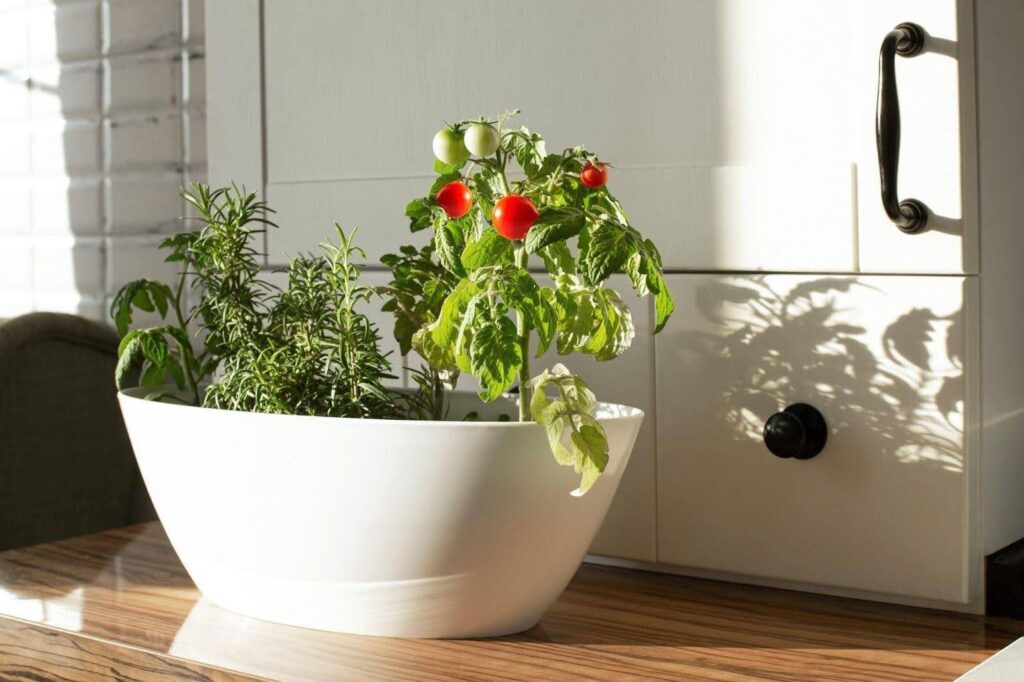Growing your own vegetables doesn’t have to stop when the weather cools. With the right setup, you can enjoy fresh, homegrown produce all year long right inside your home. An indoor vegetable garden brings the joy of gardening into your living space and ensures a constant supply of organic greens, herbs, and even fruits. Here’s how to create your own indoor garden that flourishes every season.
How to Build Your Indoor Vegetable Garden
1. Choose the Right Location
Start by picking a spot that receives plenty of light and stays at a consistent temperature. Most vegetables need at least 6 to 8 hours of bright light daily. A sunny windowsill, balcony corner, or an unused kitchen counter can all work well. For darker rooms or shorter winter days, LED grow lights are a great solution.
2. Select Suitable Vegetables
Not every crop thrives indoors, so focus on compact, fast-growing varieties. Great choices include:
- Leafy greens: Lettuce, spinach, kale, arugula
- Herbs: Basil, parsley, cilantro, thyme, mint
- Root vegetables: Radishes, baby carrots, green onions
- Fruiting plants: Cherry tomatoes, peppers, and dwarf beans
3. Use the Right Containers and Soil
Container choice matters. Pick pots with drainage holes to prevent waterlogging and use well-draining potting soil designed for vegetables. Avoid heavy garden soil, which can compact and restrict roots. For herbs or greens, shallow trays work well, while fruiting plants like tomatoes need deeper containers to support root growth.
4. Plan for Airflow and Space
Proper airflow helps plants develop stronger stems and prevents issues like mold or fungus. When setting up your garden, leave enough space between containers so air can move freely. If the room feels stagnant, use a small oscillating fan to keep the air circulating. Organize your setup with taller plants at the back and smaller ones in front to ensure each plant receives enough light.
5. Add Support and Structure
For climbing or fruiting vegetables like tomatoes or beans, install small trellises or stakes in the pots. This helps guide upward growth and saves space. For a cleaner look, use vertical racks with adjustable shelves-ideal for compact indoor setups.
6. Automate for Convenience
Gardeners with a sufficient budget can consider an automated system. Timers keep grow lights on schedule, while self-watering pots or drip systems maintain consistent moisture. A digital thermometer and humidity monitor also help you track growing conditions with ease, reducing the need for constant checks.
How to Maintain Your Indoor Vegetable Garden
1. Monitor Light
Light is the foundation of growth. Keep an eye on how your plants respond-leggy stems or pale leaves often signal insufficient light. Adjust the placement of your plants or extend the duration of your grow lights to ensure they receive enough brightness each day, depending on the crop.
2. Water Wisely
Overwatering is one of the most common indoor gardening mistakes. Always check the top inch of soil-if it feels dry, it’s time to water. Use room-temperature water and pour slowly until it begins to drain from the bottom of the pot. Empty saucers afterward to prevent root rot.
3. Feed Regularly
Indoor plants rely entirely on the nutrients you provide. Use a balanced liquid fertilizer every two to four weeks, or choose a slow-release option for longer nourishment. Leafy greens benefit from nitrogen-rich feed, while fruiting plants like tomatoes prefer a formula with more phosphorus and potassium.
4. Control Temperature and Humidity
Most vegetables prefer temperatures between 65-75°F (18-24°C). Keep plants away from cold drafts, heating vents, or direct blasts from air conditioners. For humidity-loving crops like herbs and leafy greens, lightly mist them or place a shallow tray of water nearby to maintain moisture in the air.
5. Prune and Harvest Regularly
Regular pruning keeps plants tidy, encourages new growth, and prevents overcrowding. Harvest greens and herbs frequently to stimulate fresh shoots. For fruiting vegetables, pick ripe produce promptly to encourage continued flowering and yield.
6. Pest Management
Even indoor gardens can attract tiny invaders like aphids or spider mites. Inspect your plants regularly, especially the undersides of leaves. Wipe affected areas with a damp cloth or use a gentle insecticidal soap if needed. Good airflow and clean conditions go a long way in prevention.
Final Thoughts
Building an indoor vegetable garden is about creating balance-enough light, warmth, airflow, and space for each plant to thrive. Once your setup is complete, you’ll have a sustainable way to grow fresh vegetables right at home, no matter the weather outside. It’s a rewarding project that turns any corner of your house into a living, productive green space.

